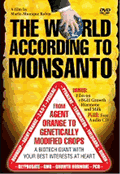By Allan Wall
October 21, 2009
NewsWithViews.com
Last
month saw the passing of Norman Borlaug, a man whose work changed the
world. This brilliant agronomist, whose innovations sparked the “Green
Revolution” received the Nobel Peace Prize, the Presidential Medal
of Freedom, the Congressional Gold Medal, the Aztec Eagle (from the Mexican
Government) and the Padma Vibhushan, the highest honor that India
bestows upon a foreigner.
It has been calculated that Borlaug’s work (much of it carried out
in Mexico) headed off a world famine and saved a billion lives worldwide.
(Click here
for a photo of Norman Borlaug in 2003).
Dr. Borlaug died of cancer complications on September 12th, 2009, in Dallas,
Texas, at the age of 95. Coincidentally, my own grandfather also passed
away this year and was the same age as Borlaug.
The death of one we know or whom we know of elicits reflection upon his
life and accomplishments. In the case of Norman Borlaug, his beginnings
were in the great American Midwest, where he was born in Cresco, Iowa
in 1914.
Like my grandfather, Borlaug attended a one-room country schoolhouse ,
where he completed his eighth-grade education. After high school, Norman
attended the University of Minnesota, eventually earning his Ph.D. In
plant pathology and genetics in 1942. (My grandfather also got a Ph.D.
It seems those one-room country schoolhouses could be good launching pads
for those who went into higher education).
In 1937, Borlaug had married Margaret Gibson – the two were married
69 years until her death in 2007.
During World War II, as a microbiologist for DuPont, Borlaug and others
developed a glue that could withstand South Pacific saltwater. This made
it possible for speedboats to re-supply American troops on the Japanese-occupied
island of Guadcanal by tossing them in the water so they would drift ashore.
In 1944, Borlaug moved to Mexico to work at a new joint U.S.-Mexican wheat
production project, and wound up working on related projects there until
1979.
The agronomist took advantage of Mexico’s varied climates and altitudes
to breed wheat in two growing seasons per year, in a process called shuttle
breeding. In the summer he would work in Chapingo in the central state
of Mexico. Then, after harvest, he would take the seed wheat straight
to the Yaqui Valley station in northwest Sonora state. (For map click
here.) At the time this ran counter to a then-observed (and later
disproved) principle that seeds required a rest after harvest before being
sown.
Borlaug
was a real hands –on supervisor. He wasn’t just crunching
numbers in the office all the time , but would spend plenty of time in
the field with the workers. (For a photo of Borlaug in the field in 1943
click
here, he’s on the left).
The result of Borlaug’s work was the development of semi-dwarf varieties
of wheat that were high-yield and disease-resistant. By 1963, Mexico had
become a net exporter of wheat.
In the 1960s, the wheat varieties and techniques were exported to India
and Pakistan where wheat yields nearly doubled from 1965 to 1970. It was
called the Green Revolution and it’s credited with saving a billion
human beings from starvation.
In 1968, Paul M. Ehrlich confidently predicted that "The battle to
feed all of humanity is over ... In the 1970s and 1980s hundreds of millions
of people will starve to death in spite of any crash programs embarked
upon now. I have yet to meet anyone familiar with the situation who thinks
India will be self-sufficient in food by 1971… India couldn't possibly
feed two hundred million more people by 1980. “
Thanks to Norman Borlaug and the Green Revolution, Ehrlich was proven
wrong. In fact, Pakistan was self-sufficient in its production of wheat
by 1968, the same year as Ehrlich’s prediction and by 1974 India
had self-sufficiency in all its cereal production. In both India and Pakistan,
the increase in food production has been increasing faster than the population
growth rate. In other countries in Latin America, the Middle East and
Africa, the Green Revolution has brought about similar results.
In
1970, Norman Borlaug was selected to receive the Nobel Peace Prize, on
the grounds that he had contributed to world peace by increasing the supply
of food. The Nobel committee called his house in Mexico, but he had already
left for work, so his wife Margaret went to the field to give him the
news. At first, he didn’t believe it! When he was finally convinced
, he just went back to work.
Aase Lionaes, Nobel Peace Prize committee chairman, said this of Borlaug
in the presentation of the award: "More than any other single person
of his age, he has helped to provide bread for a hungry world. We have
made this choice in the hope that providing bread will also give the world
peace."
Of course, Borlaug and the Green Revolution have their critics. Such criticisms
raise a variety of issues which are worthy of consideration. Given the
complex nature of international agriculture, and its intersection with
politics and culture, untangling such issues requires some serious thinking.
Some criticize the Green Revolution because they oppose genetic crossbreeding.
However, man has been genetically manipulating plants and animals for
millennia. Indians in pre-Columbian Mexico developed corn (maize) from
wild teosinte plants, so they were practicing genetic manipulation.
Other critics have accused the Green Revolution of replacing subsistence
farming with input-intensive farming, polycultures with monocultures,
and changing traditional diets. These changes are undeniable. Whether
they are positive or negative might be debated, but the same transformations
have already taken place in the developed world and are now taking place
in the developing world. As for the diets, they may have changed anyway.
Green Revolution techniques do use a lot of water, and water management
is a big problem in today’s world. But that would be a challenge
with or without the new techniques.
Proponents of organic agriculture have criticized it for its use of pesticides,
herbicides and inorganic fertilizer. There’s no doubt that chemicals
can be dangerous if used improperly. But the organic route is not currently
practical for all farmers. The pros and cons of every agricultural technique
must be carefully weighed based on local conditions and the goals to be
achieved.
Ironically, the Green Revolution has been opposed for causing roads to
be constructed in the Third World. Honestly, I get the impression that
some Western environmentalists want the developing world to remain poor
rather than modernize.
Borlaug has responded by calling the Green Revolution "a change in
the right direction, but it has not transformed the world into a Utopia"
And he has criticized the elitism of some environmentalists when he said
that "some of the environmental lobbyists of the Western nations
are the salt of the earth, but many of them are elitists. They've never
experienced the physical sensation of hunger. They do their lobbying from
comfortable office suites in Washington or Brussels. If they lived just
one month amid the misery of the developing world, as I have for fifty
years, they'd be crying out for tractors and fertilizer and irrigation
canals and be outraged that fashionable elitists back home were trying
to deny them these things."
Borlaug relocated back to the U.S. in 1979 but continued to spend several
months each year in Mexico. He was involved in various projects, including
the promotion of the Green Revolution in Africa, in partnership with the
Japanese Nippon Foundation and with Jimmy Carter and the Carter Center.
The famed agronomist also served as a professor and researcher at Texas
A&M University from 1984 until his death.
It was there, on the Texas A & M Campus, that Dr. Borlaug’s memorial service was held on October 6th. The service was conducted by Lutheran minister Dr. David Beckmann, president of Food for the World. The eulogies were delivered by a diverse group. From the U.S. government there was Secretary of defense Dr. Robert M. Gates and Secretary of Agriculture Tom Vilsack. Nippon Foundation chairman Yohei Sasakawa, and an old friend of Borlaug’s, Dr. M.S. Swaminathan, a member of the Parliament of India.
|
Subscribe to the NewsWithViews Daily News Alerts! |
And granddaughter Tiffany Rubi gave a short talk in which she shared two of Borlaug’s favorite sayings. One was the Spanish expression “Vaya con Dios” (Go with God). Another was about reaching for the stars: “Reach for the stars. Although you will never touch them, if you reach hard enough, you will find that you get a little 'star dust' on you in the process."
� 2009 Allan Wall - All Rights Reserved
Sign
Up For Free E-Mail Alerts
E-Mails are used strictly for
NWVs alerts, not for sale
Allan Wall recently returned to the U.S. after residing many years in Mexico.
Website: www.allanwall.net
E-Mail:
allan39@provalue.net














